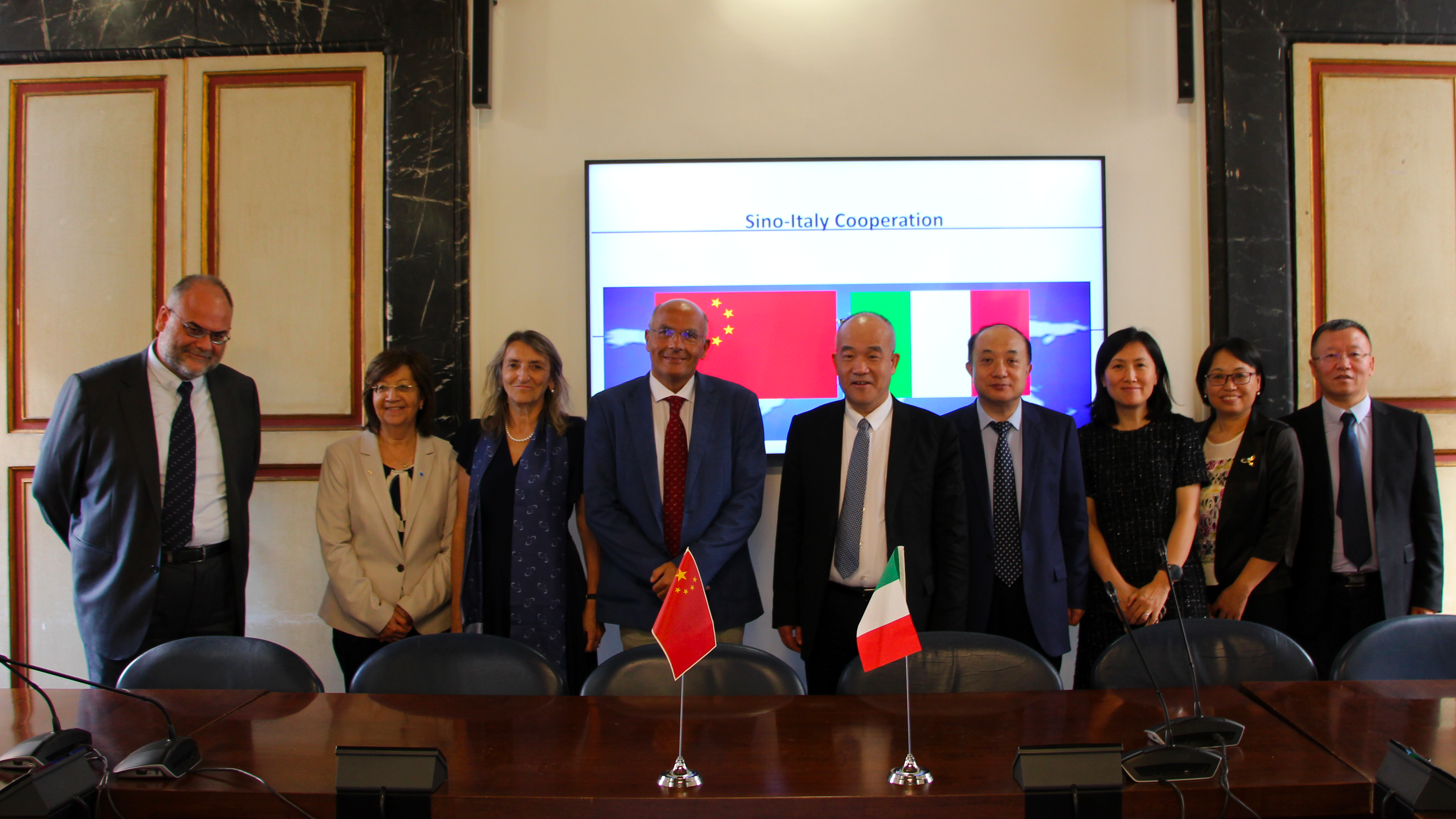Rome, 25 September 2025 – A delegation of the National Natural Science Foundation of China (NSFC), one of China’s main funding institutions for scientific research, led by its President, Professor DOU Xiankang, visited the headquarters of the National Institute for Nuclear Physics (INFN) today for a bilateral meeting aimed at exploring a possible structured collaboration framework between the two institutions.
The meeting took place as part of the NSFC delegation’s mission to Europe. Until yesterday, the delegation was in Brussels, where it continued the important dialogue with the Executive Board of Science Europe, the association that brings together the leading organisations conducting and funding cutting-edge scientific research across Europe.
The two sides expressed their desire to broaden and deepen a dialogue that could lead to direct collaboration between INFN and NSFC. In the field of fundamental physics, cooperation between Italy and China is already solid and long-standing, thanks to the partnership between INFN and the Institute of High Energy Physics (IHEP) of the Chinese Academy of Sciences (CAS). Establishing a collaborative relationship between INFN and NSFC would further strengthen joint activities in this area of research and support the education and training of young researchers engaged in Italian-Chinese joint projects.






